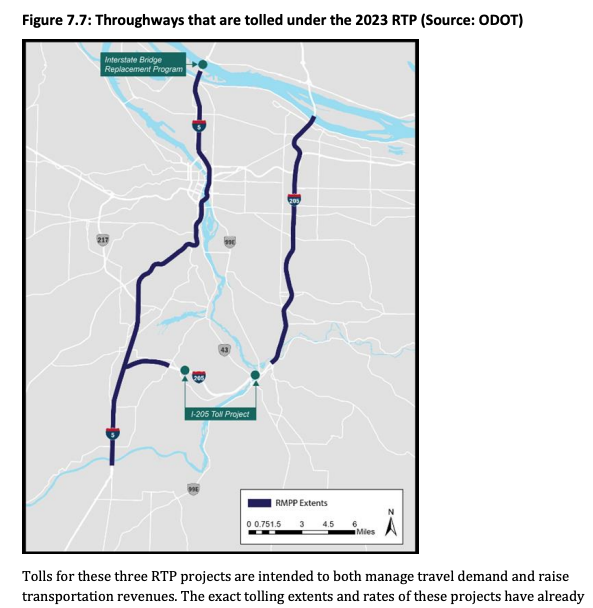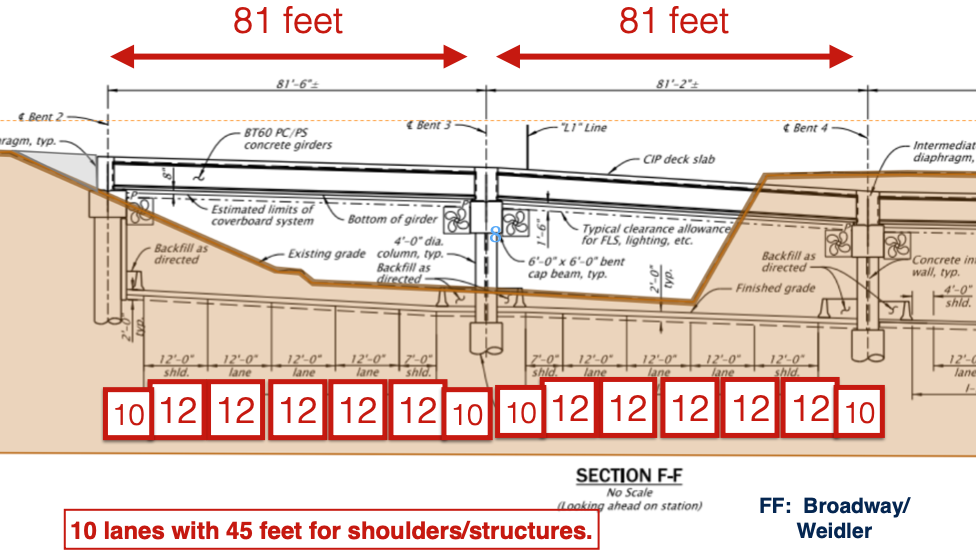What City Observatory did this week
Abandoning road pricing monkey-wrenches state transportation, traffic reduction and climate plans. This week, Oregon Governor Tina Kotek terminated Oregon’s Regional Mobility Pricing Program, which would have imposed per mile fees on major Portland-area freeways. The plan, approved by the legislature seven years ago, has been developed at a snail’s pace by the Oregon Department of Transportation, but as implementation neared (possibly in 2026) many politicians got cold feet. Kotek’s order resolves a short-term political problem, but creates all kinds of headaches for transportation in Oregon.
State and regional transportation plans have counted on road pricing to raise funds, manage (and reduce) traffic congestion, and reduce vehicle miles traveled in order to achieve state greenhouse gas reduction goals. Terminating pricing just made each of those problems worse: ODOT’s badly managed budget—already reeling from massive cost-overruns on highway widening projects—is now even worse off. Plans that called for reducing congestion with time-of-day pricing are also out the window—and congestion will grow worse. Finally, both ODOT and Metro (Portland’s regional planning agency) made road pricing the foundation of their claims that they’d reduce per capita driving by more than a third, in order to achieve adopted state greenhouse gas reductions. These financial, transportation, and climate plans are in a shambles now as a result.
Must Read
No accountability for transportation spending. Politicians like to make sweeping claims about “investing in infrastructure” but as we all know, the devil is in the details: who gets how much money for what projects. In theory, the IIJA, the Investing in Infrastructure and Jobs Act, aka the Bipartisan Infrastructure Law, was supposed to help, among other things, redress past injustices and forestall further climate change. But it turns out that most of the money has been aspirated into the carburetor of the same old highway-dominated spending system. Transportation for America, the national advocacy group, has invested considerable resources in just trying to track down how much money went where, and for what. They’ve even enlisted artificial intelligence to study the question. As Corrigan Salerno reports, the results are far from transparent. It’s simply impossible to tell where the money went. While Transportation for America was able to track some federal funds, it wasn’t able to follow all the money passed through to state transportation agencies:
. . . state-funded projects are not tracked in any central location. There are billions of dollars that this analysis cannot account for, programmed away in over 50 different formats within their State Transportation Improvement Programs (STIPs) that spell out state spending plans across the country.
Without details on how funds were spent, it’s virtually impossible to hold anyone accountable for results.
And even when projects ostensibly serve these climate, safety and social justice purposes, they may just be the same old highway widening projects dressed up with woke-washing and token multi-modal features, like the $450 million in “reconnecting communities funds” awarded to the Oregon Department of Transportation for a project that doubles width of the I-5 freeway that decimated the city’s historically African-American neighborhood.
Partisanship and Covid, revisited. Brad Delong points us to the New York Times analysis of Covid death rates by county. The pattern is striking. While Covid-19 deaths were initially more prevalent in “blue” counties, the pattern has shifted dramatically over time, with deaths being persistently higher in “red” counties. This shift was especially strong after the availability of the Covid vaccines.
As DeLong argues, the data suggest having neighbors who vote for Donald Trump Is dangerous to your health. Delong calculates
“in a county where the margin for Trump vs. Biden rises by an extra 1%-point…and your chances of dying from the Covid Plague go up by 0.0075%-point: That means (with an election turnout of half the population) that you only need an additional 67 excess Trump voters in a county to kill one additional person from the Covid Plague.”
In the News
Oregon Public Broadcasting included Joe Cortright’s analysis of the demise of road pricing in its story “A plan to toll Portland highways is dead.”



